POAP Creator Simulator
Create a digital attendance badge for your event using the same process as the official POAP platform. This simulator shows you what to expect when creating a real POAP.
Event Information
Distribution Settings
Preview Your POAP

Event Name Here
Date: January 1, 2024
Event description will appear here
Imagine going to a concert, a hackathon, or a virtual meetup-and walking away with something that proves you were there. Not a ticket stub, not a photo, but a permanent, unchangeable digital badge stored on the blockchain. That’s what a POAP is. Short for Proof of Attendance Protocol, it’s not just another NFT. It’s a digital memory you can’t lose, delete, or fake. And it’s already being used by major events, crypto projects, and even traditional companies like TIME Magazine and the U.S. Open.
What Exactly Is a POAP?
A POAP is a non-fungible token (NFT) that serves as proof you attended a specific event. Unlike other NFTs that are bought and sold for profit, POAPs are given away for free to people who show up-whether in person, online, or in a metaverse. Each one is unique, tied to a date, location, and event theme. It comes with a custom image, a timestamp, and a serial number-all recorded on the blockchain so no one can alter it. POAPs were first created in 2019 at ETHDenver, a big Ethereum conference. The team wanted a way to track who participated in the hackathon without relying on paper badges or unreliable databases. They built a simple tool that minted a token to each attendee’s wallet. It worked so well that it spread like wildfire. By 2023, over 6.7 million POAPs had been issued by more than 37,000 different groups-from indie artists to Fortune 500 companies.How Do POAPs Work?
Technically, POAPs are built as ERC-721 tokens, the same standard used by most NFTs on Ethereum. But here’s the twist: they don’t live on Ethereum’s main network anymore. To keep costs low and transactions fast, POAPs moved to the xDAI sidechain in 2020. This means you don’t need to pay hundreds of dollars in gas fees just to claim a badge for a webinar you attended. When you get a POAP, it’s sent directly to your crypto wallet-like MetaMask or Rainbow. You don’t need to buy it. You just click a link, sign a message, and the token appears in your collection. The event organizer sets the rules: who gets it, when, and under what conditions. Maybe you had to answer a quiz. Maybe you had to stay for the full talk. Maybe you had to be physically present at a specific GPS location. The protocol doesn’t care how you proved attendance-it just records that you did. Each POAP includes three key pieces of data:- A unique image (usually designed for the event)
- The exact date and time it was issued
- A serial number tied to your wallet address
Why Are POAPs Different From Other NFTs?
Most NFTs are about speculation. People buy Bored Apes or CryptoPunks hoping they’ll go up in value. POAPs are the opposite. They’re designed to have sentimental, not financial, value. The POAP team actively discourages trading them. Why? Because if you start selling your POAPs, you’re missing the point. They’re not investments. They’re memories. Think of it like a passport stamp. You don’t sell your passport stamps-you keep them to remember where you’ve been. POAPs work the same way. A crypto enthusiast might have a collection of 50+ POAPs from conferences, airdrops, and community calls. Each one tells a story: “I was there when this project launched.” “I helped test this beta.” “I met the founder in person.” That’s why POAPs are called the “Kleenex” of NFTs-everyone uses the name, even if they’re not using the real thing. If someone says, “I got a POAP for the NFT art show,” they probably mean “I got a digital badge.” But only the ones issued through the official POAP platform are the real deal.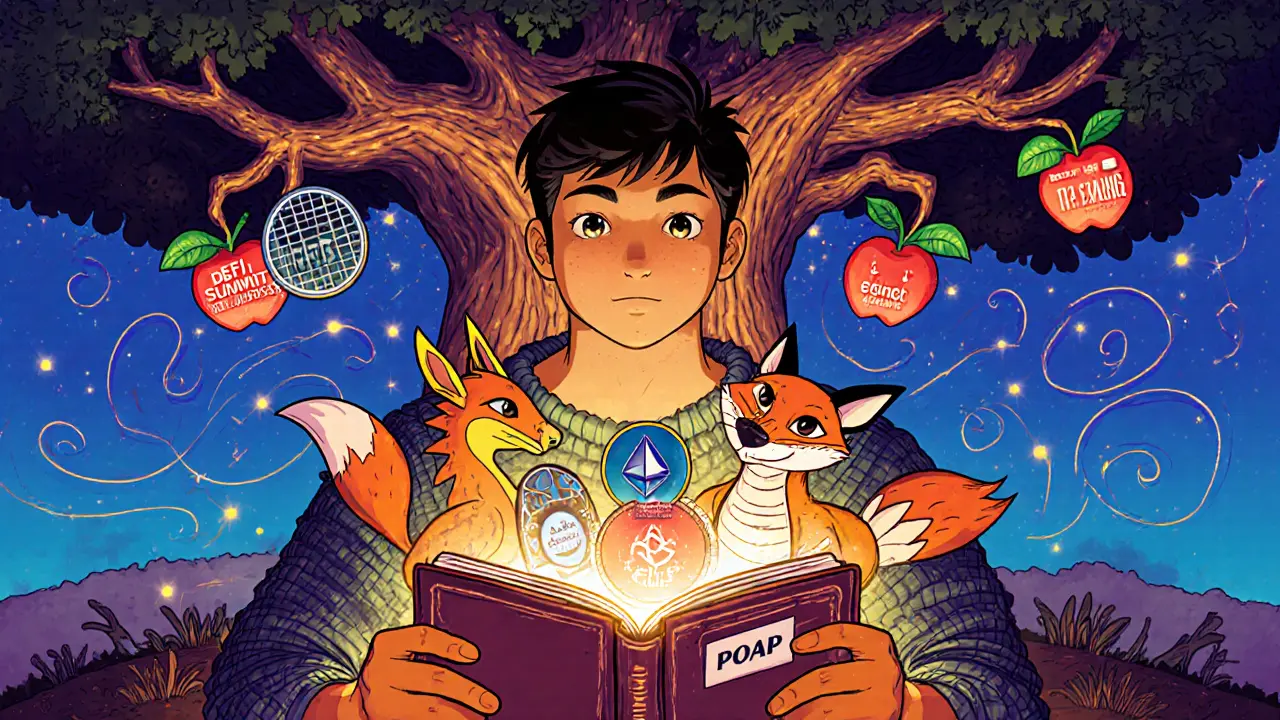
Who’s Using POAPs-and Why?
POAPs aren’t just for crypto nerds anymore. Here’s who’s using them and what they’re getting out of it:- DeFi platforms like SushiSwap and Aave give POAPs to users who participate in governance votes. It’s a way to reward engagement and build loyalty.
- Blockchain networks like Polygon and Arbitrum issue POAPs to early adopters and testnet contributors. These become digital resumes for developers.
- Traditional events like the U.S. Open and TIME Magazine use POAPs to reward attendees at hybrid events. Fans collect them like memorabilia.
- Metaverse platforms like Decentraland send POAPs to users who attend virtual concerts or art exhibits. Your attendance becomes part of your digital identity.
- Communities use POAPs to grant access to exclusive Discord channels, DAO voting rights, or future airdrops. If you have the badge, you’re in.
How to Get a POAP
Getting a POAP is easy. You don’t need to be a crypto expert. Here’s how:- Have a crypto wallet (MetaMask, Rainbow, or Phantom work best).
- Wait for an event organizer to release a POAP claim link-usually shared on Twitter, Discord, or email.
- Click the link and connect your wallet.
- Sign a simple message to prove you own the wallet.
- Boom. The POAP appears in your collection.
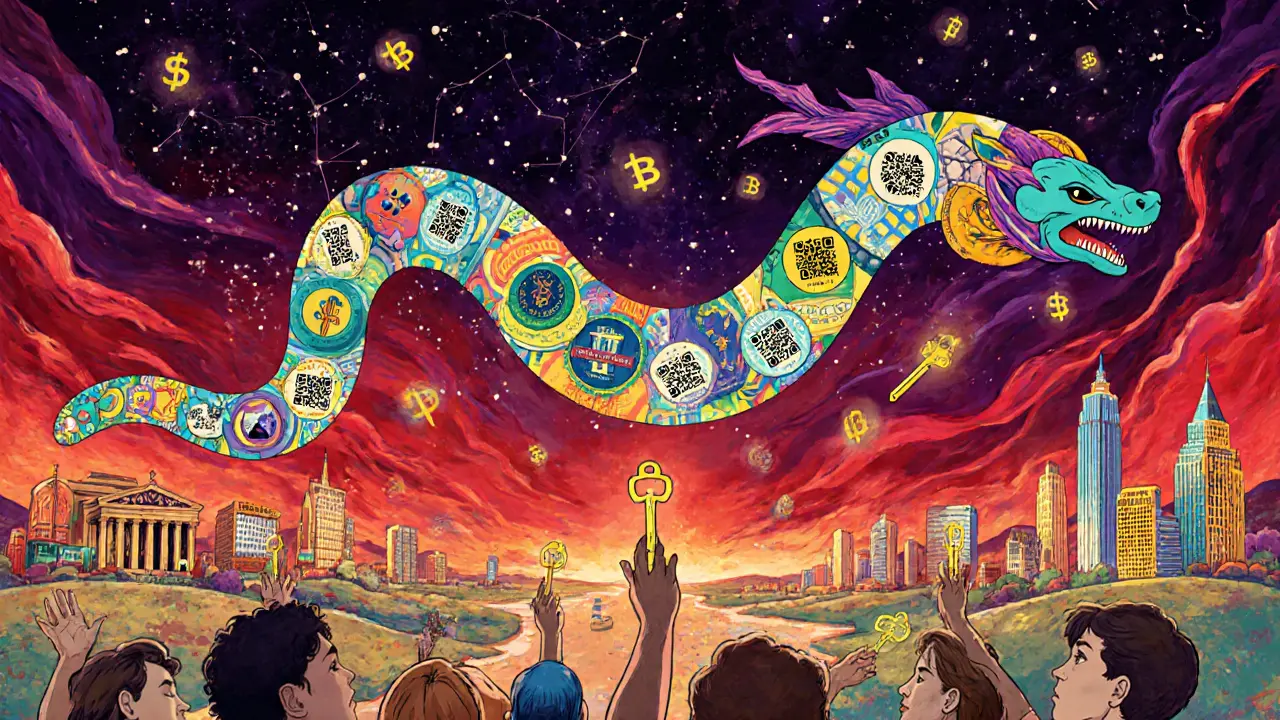
How to Create a POAP
If you’re running an event-online or offline-you can create your own POAPs. The process is straightforward:- Go to poap.xyz and click “Create POAP.”
- Fill in event details: name, date, description, and upload a custom image (PNG or JPG).
- Choose the distribution method: automatic (for everyone who joins a link) or manual (you approve each claim).
- Pay a small fee (usually under $5) to mint the POAPs on xDAI.
- Share the claim link with attendees.
What’s Next for POAP?
The future of POAP isn’t just about attendance. The team is building it into a full reputation system. Imagine:- POAPs proving you completed a blockchain course
- Employers checking your POAP history to verify your experience
- DAOs using POAPs to grant voting power based on past contributions
- Travelers collecting POAPs from global crypto meetups as a digital passport
Is POAP Worth It?
If you’re just looking to make money from NFTs, POAPs aren’t for you. They rarely sell for more than a few dollars, and the team doesn’t want them to. But if you care about being part of communities, remembering meaningful moments, or building a verifiable digital identity-then yes. POAPs are one of the most useful, underappreciated tools in Web3. Your POAP collection is your blockchain scrapbook. It’s not about how many you have. It’s about what they represent. The first conference you attended. The project you believed in before it blew up. The person you met who changed your path. Those moments? They’re now on the blockchain. Forever.Do I need crypto to get a POAP?
You need a crypto wallet, but you don’t need to buy cryptocurrency to claim a POAP. Most POAPs are distributed for free. You just need to connect a wallet like MetaMask and sign a message to prove you own it. No purchase required.
Can I sell my POAPs?
Technically, yes-you can list them on NFT marketplaces. But the POAP team strongly discourages it. POAPs are meant to be collectible memories, not investments. Selling them goes against their original purpose of proving real participation, not speculation.
Are POAPs only on Ethereum?
No. While POAPs were originally built on Ethereum, they now run on the xDAI sidechain to keep fees low and transactions fast. This means you don’t pay high gas fees to claim them. The underlying technology still connects to Ethereum’s security, but the actual tokens live on a cheaper network.
Can I create a POAP for my own event?
Yes. Anyone can create a POAP through the official POAP website. You just need to provide event details, upload an image, and pay a small fee (usually under $5). The platform handles minting and distribution-no coding required.
What if I lose my wallet? Can I recover my POAPs?
If you lose access to your wallet, you lose your POAPs. There’s no recovery system because POAPs are tied directly to your wallet address-just like cryptocurrency. That’s why it’s critical to back up your seed phrase securely. POAPs can’t be transferred to a new wallet unless you control the original one.






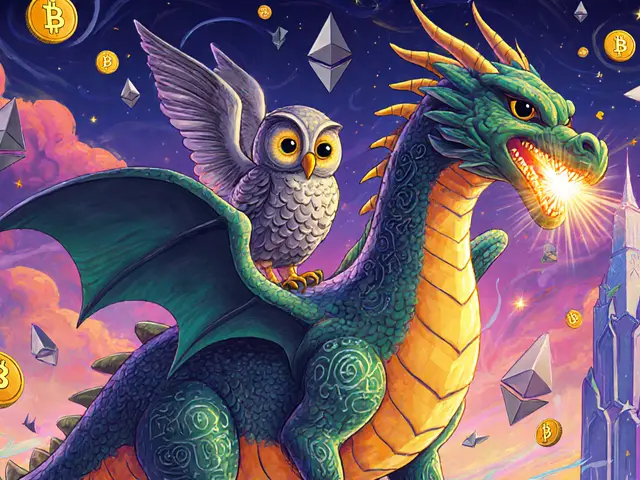

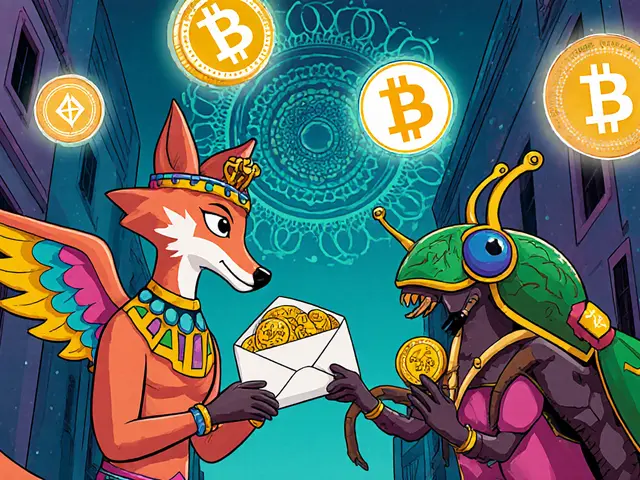
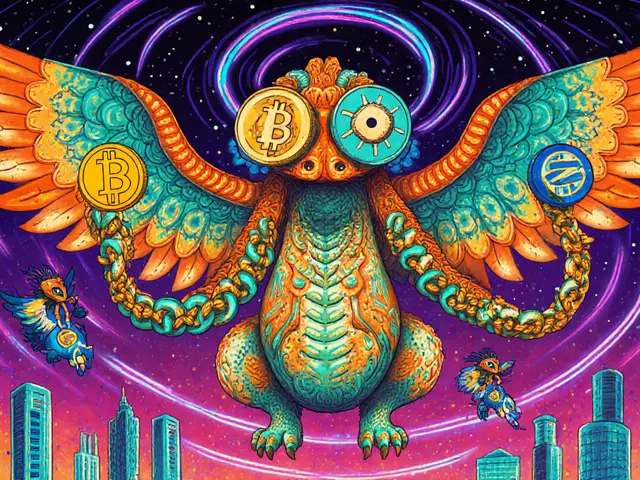

15 Comments
POAPs are the closest thing we’ve ever had to a digital soul. They don’t appreciate in value, they don’t get sold on OpenSea, they just sit there-quiet, unassuming, and utterly real. I have one from the first time I spoke at a local blockchain meetup. I didn’t think much of it then. Now, three years later, I look at it and remember the shaking hands, the bad coffee, the guy who asked if Bitcoin was a pyramid scheme. That’s not data. That’s memory.
Okay but what if the government starts using POAPs to track who attended "unauthorized" gatherings? 🤔 I mean, they already know where you went to the grocery store via your phone. Now they’ll know you were at that "crypto meetup" in Portland? This is surveillance with a pretty sticker on it.
Let me get this straight-you’re telling me some startup in 2019 made a blockchain badge for people who showed up to a conference, and now TIME Magazine is using it? That’s not innovation. That’s desperation. If your brand needs a digital sticker to seem cool, you’ve already lost. POAPs are the NFT equivalent of a high school club pin. Cute. Pointless.
POAPs are not NFTs. They are digital receipts. And receipts are not collectibles. They are documentation. The fact that people treat them like Pokemon cards reveals a fundamental misunderstanding of both technology and human behavior. We are not meant to hoard proof of presence. We are meant to forget, to move on, to evolve. This is nostalgia encoded in smart contracts.
I’ve seen the POAPs. The designs are so… amateur. I mean, the U.S. Open logo on a pixelated banner? And you’re telling me this is cultural currency? I’d rather have a signed tennis ball. At least that has texture. This is just a JPEG with a timestamp.
Wait wait wait-so you’re telling me I can get a digital badge just for showing up to a Zoom call???!!! And you’re saying this is revolutionary???!!! My aunt in Kerala got one for attending a webinar on banana farming!!! This is not Web3-it’s Web2 with glitter!!!
The ontological shift here is non-trivial. POAPs instantiate participatory epistemology on a decentralized ledger-transforming ephemeral social capital into persistent, cryptographically verifiable identity artifacts. The ERC-721 standard, when decoupled from speculative markets and repurposed for provenance of presence, becomes a tool for reconstructing collective memory outside institutional control.
I got a POAP for a webinar on NFTs and now I feel like I’ve been spiritually violated. Like I gave my soul to a Discord bot and now it’s in my wallet forever. I didn’t even stay for the Q&A. I just clicked "claim" and ran. Now I’m haunted. I can’t sleep. I keep checking my MetaMask. What have I done???
If you’re new to Web3 and you’re reading this-don’t overthink it. Get a wallet. Claim a few POAPs. Go to events. Talk to people. The value isn’t in the image. It’s in the people you meet, the ideas you steal, the confidence you build. I gave my first POAP to a 14-year-old who asked me how to code. She’s now building her own DAO. That’s the magic. Not the token. The person.
My favorite POAP is from a tiny indie game jam in Austin. No sponsors. No sponsors. Just 12 people in a garage making a game about a cat that solves math problems. I still have it. I don’t show it off. I just know it’s there. Kinda like a secret handshake with the universe.
POAPs are so last year. I mean, have you seen the new decentralized credentialing protocols on Solana? They’re faster, cheaper, and have actual utility. POAPs are like vinyl records in the age of Spotify. Nostalgic. Cute. But irrelevant.
I remember the first time I claimed a POAP. I was nervous. I didn’t know how to connect my wallet. I thought I’d mess it up. Someone in the Discord server walked me through it. No judgment. Just patience. That POAP? It’s not just a badge. It’s the moment I stopped feeling like an outsider in this space.
This entire system is a Western capitalist trap disguised as community. Why should I prove I attended an event to a blockchain that is controlled by American developers? What if my attendance is used to profile me for future economic exclusion? The POAP is not freedom-it is a digital leash.
They say POAPs aren’t for trading. But what if I want to sell mine to fund my daughter’s education? What if my POAP from the 2021 Ethereum summit is worth $5000 because it’s rare? Who are you to tell me what my memories are worth? This is capitalism, not communism.
I lost my wallet last year. Lost everything. All my POAPs. My ETH. My NFTs. I cried for a week. Then I realized something. I didn’t lose my memories. I lost the keys. The moments still happened. The conversations still mattered. The people still remembered me. The blockchain doesn’t hold truth. People do.